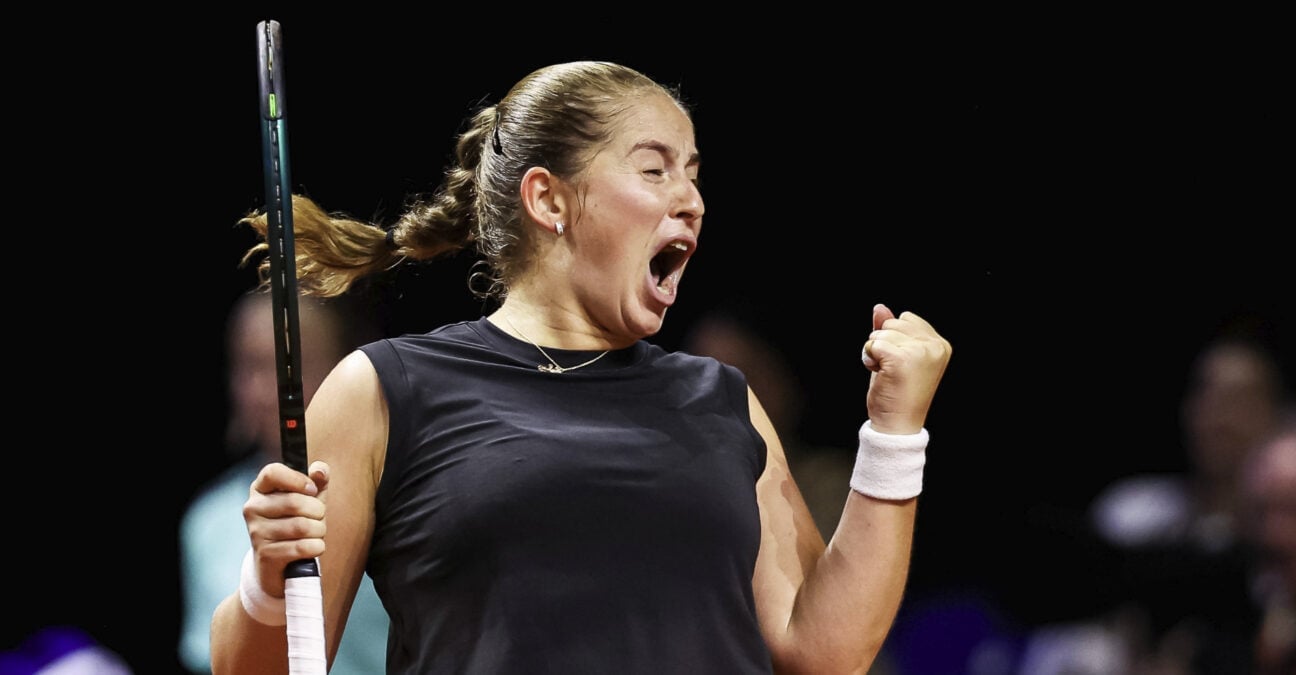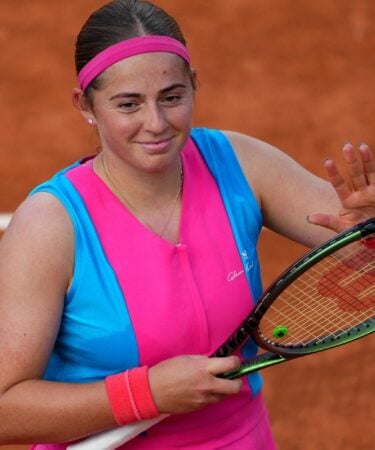Behind the most remarkable stat in tennis: Why Ostapenko has such a hold over Swiatek
Ostapenko’s win in Stuttgart on Saturday was her sixth out of six against Swiatek, who seems unable to find her usual level when she plays the Latvian
 Imago/Psnewz
Imago/Psnewz
It’s one of the most remarkable stats in tennis, the 6-0 record that Jelena Ostapenko now holds over the five-time Grand Slam champion, Iga Swiatek, after her three-set win in the quarter-finals in Stuttgart on Saturday.
On paper, it’s a crazy stat. Swiatek has been ranked either No 1 or No 2 since March 2022, has won five slams, including four French Open titles, and is by far the best player in the world on clay.
But put Ostapenko across the net from her and something changes. From their first meeting in Birmingham, when admittedly Swiatek was still a junior, the Latvian has had the edge, and sometimes more than that, almost casting a spell over the Pole.
But how does Ostapenko do it? We’ve taken a look back at their previous battles and examined the words of both women to try to get an idea of the dynamic that occurs when Ostapenko meets Swiatek.
Pressure always on Swiatek
Swiatek bullies most of her opponents with her early-taken groundstrokes, denying them time, getting on top of them right from the start of her matches. Everyone knows about Swiatek’s prediliction for bagels and breadsticks, her love for 6-0, 6-1 sets.
But against Ostapenko, not only is she seemingly unable to do that, she also finds herself up against an opponent who does exacrly the same thing she tries to do, hammering returns, taking time away from her opponents. That puts pressure on the first serve of Swiatek and in Stuttgart on Saturday, she found the mark with just 50 percent of her first serves. When she landed her second serve, she won just 40 percent, Ostapenko battering returns and anything that fell remotely short.
Asked after the match if the one-sided nature of their head to head is down to Swiatek’s fear or her own confidence, Ostapenko said both. But she also revealed something specific, something that explains an awful lot about why she has an edge. “I try to be aggressive and to take time away from her, because when she has time, she’s playing very well,” she said.
Ostapenko is smarter, tactically, tHAN SHE GETS CREDIT FOR
At first glance, it often looks like Ostapenko just goes for broke, no matter what. There are certainly times when she tire to hit a winner on every shot. But she’s also tactically more astute than she gets credit for. In Stuttgart, as she has done in all of their matches, Ostapenko went to the Swiatek forehand when she had to extend the rallies, and more often than not, she got the reward she was looking for, a mistake.
The Swiatek forehand is a huge weapon, when she is hitting it with authority and when she’s balanced, mentally and positionally. However, it’s also the less-consistent side, the side than can break down when things are not in sync.
On Saturday, she was often scrambling across the baseline, slightly off balance. Some of that was due to the power of Ostapenko, but some of it was a rustiness on clay and the fact that her confidence is still not where is should be. Stuttgart is, of course, the first European clay-court event for the top players and the chances are that Swiatel will improve as the weeks go by, to the point where she peaks again at Roland-Garros.
But her confidence is still lacking; after all, she has not been to a final since she won her fourth Roland-Garros last summer.
Ostapenko also reins it in when she needs to. In Stuttgart, she said she started to play a little safer in the third set. At the US Open in 2023, she did something similar, ending up with 39 winners and 34 unforced errors.
Both players know the (mental) score
There’s no question that the match-up is in Swiatek’s head. After losing to Ostapenko in the 2023 US Open, she said this: “For sure I think, yeah, she plays well against me. I mean, I don’t have any comparison because she always did that.”
Swiatek gave a brief press conference after losing in Stuttgart and it was not entirely clear as to what, if anything, her tactics are when she plays Ostapenko, though she said it was a different contest to many of their other ones.
“I think my head was much more clear (than their previous meeting in Doha earlier this year) and I was looking for solutions and I found them,” she said, quoted by Tennis 365 website. “Even though I started being a little bit tense, you know, in the first set, I managed to recover well and that was the difference.
“Today was a tight match, so for sure I had my chances to win. Before…these matches were different. Like, she went for it and she was smashing every ball kind of perfectly. Today she didn’t, she made some mistakes. I had my chances. I just didn’t use them.”
Mental battle gets harder with every loss
We are not quite in Vitus Gerulaitis-Jimmy Connors territory yet – a rivalry which, after Gerulaitis finally ended a 16-match losing streak to his fellow American at the 1979 Masters, yielded the immortal line: “No one beats Vitus Gerulaitis 17 times in a row – but 0-6 against a long-time No 1 is quite something.
Swuatek’s nerves were clear for everyone to see in Stuttgart on Saturday when she began with a terrible opening service game, setting the tone for a first set in which Ostapenko constantly had her on the back foot.
With every defeat to Ostapenko, the mental hurdle gets ever higher. Swiatek battled hard in Stuttgart but still looked shaky, on a surface where she should feel superior, even if, as Ostapenko pointed out, she is also a French Open champion herself.
Swiatek will probably be hoping that Ostapenko is in the other half of the draw for the forseeable future, but somewhere along the way, they will meet again. How Swiatek deals with that situation will be fascinating to watch.














